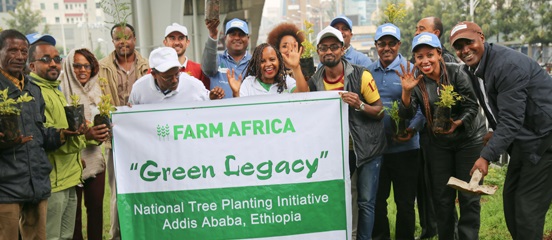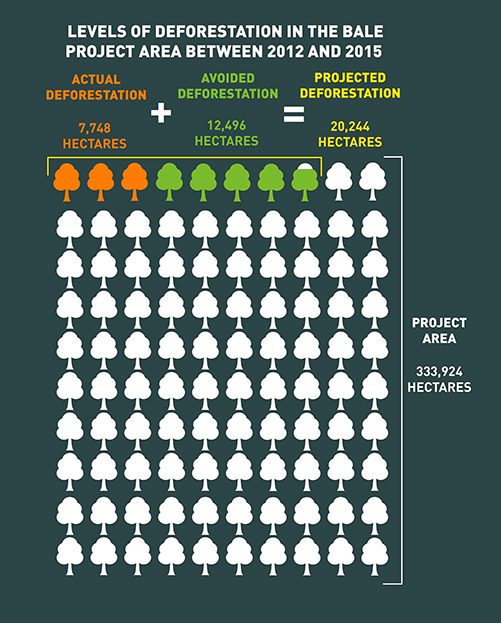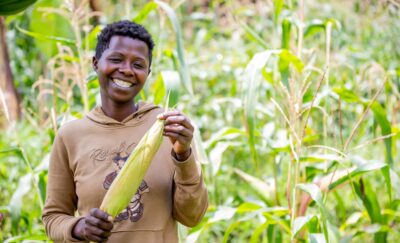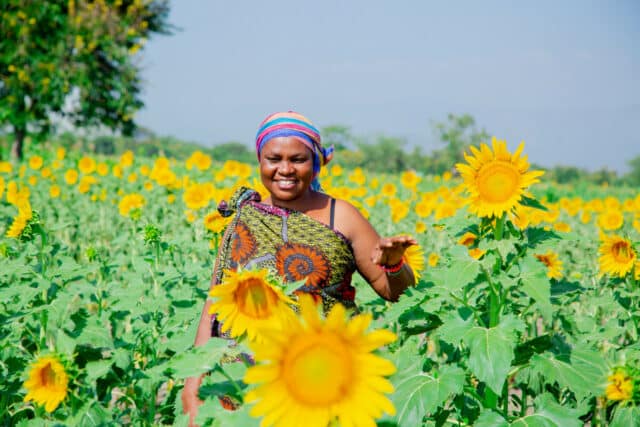Expert view
9 August 2019
How lasting will Ethiopia’s Green Legacy be?

By Nicolas Mounard, CEO, Farm Africa
Last Monday, Ethiopia came together to plant about 350 million trees in 12 hours.
In light of evidence that trees are the most effective solution to tackling climate change, it’s clear that the “Green Legacy” campaign is one of the most influential and potentially effective climate action intiatives of our time.
The campaign showed climate leadership on a global scale by the government of Ethiopia, a nation that is far down the list of the world’s biggest polluters.
The country deserves huge recognition for the step. But it also needs support from those more responsible for causing the climate crisis to ensure it is a lasting legacy.
Planting the trees was just the first step in the realisation of climate benefits, which are dependent on ensuring the trees are not uprooted.
Farm Africa’s experiences protecting forests in Ethiopia shows that for these seedlings to grow into large carbon-capturing trees and forests, local communities need to see that the benefits of the trees remaining in the ground outweigh the benefits of cutting them down.
It’s unrealistic and unfair to expect remote rural communities, many of whom live in extreme poverty, to factor potential global climate benefits into this equation. For those on the brink of economic survival, the need to earn enough to support their families has to be paramount.
And that’s where the international private sector, those most responsible for contributing to climate change, has a role to play. Global companies responsible for high carbon emissions have the opportunity to offset their climate impact by offering Ethiopian communities financial incentives to protect their trees.
Buying carbon credits generated by communities actively engaged in increasing forest cover would seem a no-brainer for large corporations who have publicly expressed commitment to climate action.
Unfortunately, Farm Africa’s experience to date in Ethiopia points to a sluggish carbon market, where supply of hard-won carbon credits far exceeds demand. Carbon credits, which were designed to offer communities the necessary financial incentive to protect their forests, languish unsold year after year, ebbing away at forest dwellers’ motivation to save their trees.
Protecting seedlings
Due to high poverty levels in Ethiopia, the government has been unable to stem rising levels of deforestation. People are driven to cut down trees for firewood or to clear land to grow food. The same pressures endanger the seedlings that were planted this week.
Ethiopia’s forest cover dropped from 30% in the 19th century to 4% today. In recent years, Bale, Ethiopia’s largest alpine forest, has experienced significant levels of deforestations.
Here at Farm Africa we set about providing communities with a profitable forest-friendly alternative to cutting down trees. We worked with forest users to identify commodities like honey, incense and wild coffee that could be turned into forest-friendly businesses.
Sadly, the income these eco-businesses generate pales in comparison with what could be earnt if they axed forests to make space for farmland. The need to strengthen the economic return of these forest-friendly businesses led Farm Africa to connect residents to the carbon market.
The carbon market allows forest users in developing countries to earn carbon credits by reducing deforestation which can then be sold to CO2-emitting companies. The companies can offset their emissions, and the forest communities are paid for providing vital environmental services.
Between 2012 and 2015, the ecobusinesses’ profits and the prospect of carbon credit sales saved 12,496 hectares of Bale’s forest from the axe. Reduced deforestation saved 5.5 million metric tonnes (MT) of CO2 from being released into the atmosphere, which is the equivalent to taking 1.2 million passenger-driven vehicles off the road for one year, according to the United States Environmental Protection Agency.

Bale’s forest communities rose to the occasion: saving and planting trees, protecting the planet, generating credits. The same cannot be said of the private sector. The supply of worldwide carbon credits dwarves demand. The private sector isn’t offsetting enough of their emissions.
Between 2008 and 2017, 399.6 MT of voluntary carbon credits were generated globally, whilst only 222.4MT of credits were sold. The market is clearly failing. Without increased and sustained demand for carbon credits, people living in poverty have little incentive to protect trees.
If planting and protecting trees is the most effective climate action at our disposal, then the failing carbon market is an existential threat to us all.
Carbon credits, the missing ingredient
Ethiopia’s afforestation efforts are a vital step forward in the fight against climate change, but the long-term success of the intiative is by no means guaranteed. The world needs these seedlings to develop into healthy trees that trap carbon.
The people of Ethiopia have done their part. Now it is the turn of the global private sector to take responsibility for their emissions by buying carbon credits by stepping forward to offer Ethiopian communities financial incentives to protect the world’s most simple, participatory and effective solution to climate change: trees.




